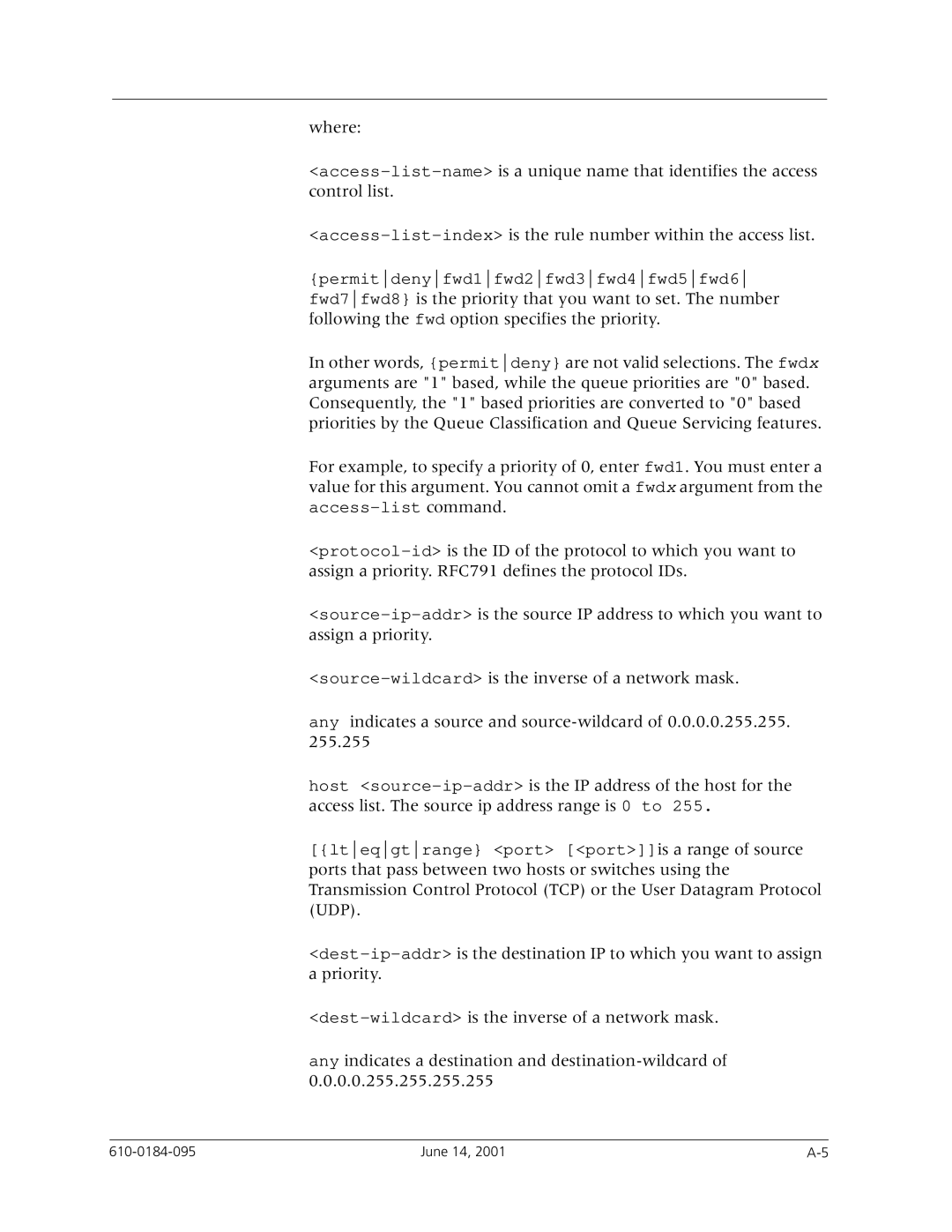
where:
{permitdenyfwd1fwd2fwd3fwd4fwd5fwd6 fwd7fwd8} is the priority that you want to set. The number following the fwd option specifies the priority.
In other words, {permitdeny} are not valid selections. The fwdx arguments are "1" based, while the queue priorities are "0" based. Consequently, the "1" based priorities are converted to "0" based priorities by the Queue Classification and Queue Servicing features.
For example, to specify a priority of 0, enter fwd1. You must enter a value for this argument. You cannot omit a fwdx argument from the
any indicates a source and
host
[{lteqgtrange} <port> [<port>]]is a range of source ports that pass between two hosts or switches using the Transmission Control Protocol (TCP) or the User Datagram Protocol (UDP).
any indicates a destination and
June 14, 2001 |
